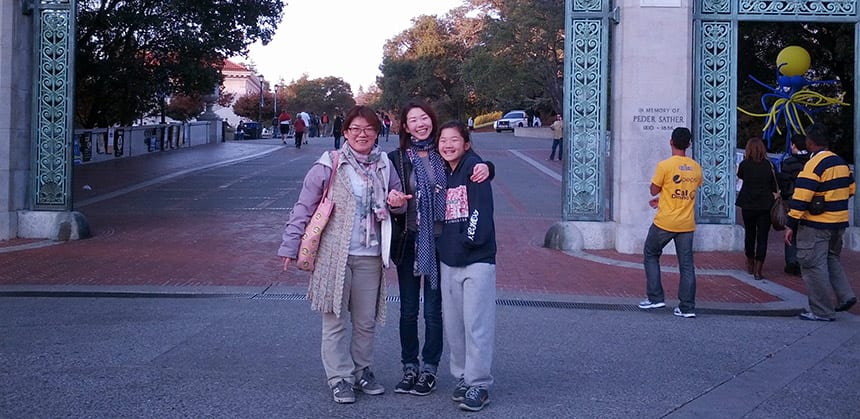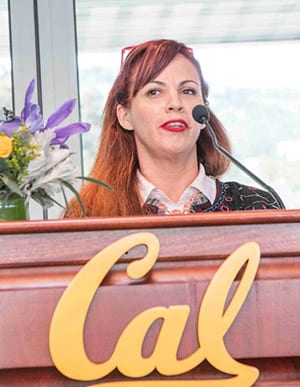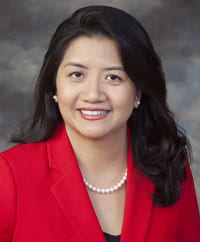
By Andrew Cohen
Berkeley Law has joined a unique state initiative geared toward diversifying law schools and the legal profession.
California’s Pathway to Law program strives to create a pipeline, anchored in 27 community colleges, that funnels more underrepresented students toward law school. Berkeley Law officially joined the program on February 24, at the third annual Pathway summit in San Francisco.

Assistant Dean of Admissions Kristin Theis-Alvarez notes that the school has “long been dedicated to ensuring both access and excellence,” citing its holistic admissions process and the Berkeley Law Opportunity Scholarship for first-generation college students. Membership in the school’s First Generation Professionals organization has also soared in recent years, and 15 first-year students were named 2017 California Bar Foundation Diversity Scholars—10 more than any other law school.
“We’ve consistently sought to innovate,” Theis-Alvarez says, “while remaining committed to our core belief that as a public institution, Berkeley Law has a responsibility to educate lawyers who will serve the legal needs of all members of society.”
Pathway participants gain access to designated community college courses, academic counseling, law school visits, and court trials. Program leaders hope to achieve a more representative landscape in all sectors where lawyers and law-related careers contribute to the workforce.
“This is a terrific program to help those in California, often those from disadvantaged and diverse backgrounds, pursue a career in law,” says Berkeley Law Dean Erwin Chemerinsky. “The program has proven its success and I’m pleased to have Berkeley Law join it.”
Balancing the scale
While more than 60 percent of California residents are from racial-ethnic minority groups, the state Bar is only 20 percent minority lawyers.
“This number has not been increasing at a pace that’s rapid enough to reflect the general population,” says program chair and Foothill College President Thuy Thi Nguyen. “There is no access or trust in a justice system that does not look like the people it serves.”
In addition to the 27 community colleges, Pathway to Law partners with more than 20 high school law academies, eight undergraduate institutions, and now eight law schools in California.
Nationally, a recent study shows that minorities make up 16 percent of attorneys at U.S. law firms, and only 9 percent of partners. At Fortune 500 companies, only 11 percent of general counsels are African American, Hispanic, Asian, or Native American.

Nguyen says program leaders are “excited with Berkeley Law’s participation. The school brings credibility and inspiration to the future of the legal profession for students of color.”
Theis-Alvarez believes this new partnership gives the school another way to reach underrepresented students “by providing good information, encouragement, exposure, and access. I’m confident that these efforts will help the State realize an even more diverse Bar and bench.”
Expanding perspectives
Former community college student Deborah Choi ’20 applauds Berkeley Law’s continued efforts to help level the playing field.
“It’s important to recruit students at community colleges, many of whom come from immigrant, low-income, or other non-traditional backgrounds, like parents or veterans,” she says. “A lot of these perspectives are not adequately represented in law schools, and the legal profession would benefit immensely by growing their presence.”
Choi’s admission to UC Merced got rescinded after her grades suffered while working long hours to help support her family. She started taking courses at Glendale Community College and Los Angeles City College, capitalized on what she calls “my second chance,” and transferred to UC Berkeley after two years.
Choi first learned of the Pathway program at a law school fair. “I remember thinking of how helpful such a program would have been in preparing me to apply and eventually attend law school,” she says. “I don’t think I’d be here at Berkeley Law if not for the help of similar programs … that demystify the law school application process and provide financial support.”
She adds that the law “continues to pick winners and at times in a vacuum, to the detriment of disadvantaged communities … including immigrants, people of color, LGBTQ, women, and the poor. For this reason, diversity in law school is necessary—not only to expose students to more perspectives and experiences, but also for the future roles these students will fill in leading the next generation.”